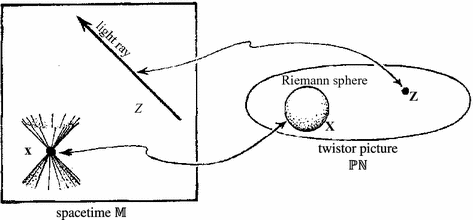Last night a preprint by Xian-Jin Li appeared on the arXiv, claiming a proof of the Riemann Hypothesis. Preprints claiming such a proof have been pretty common, and always wrong. Most of them are obviously implausible, invoking a few pages of elementary mathematics and authored by people with no track record of doing serious mathematics research. This one is somewhat different, with the author a specialist in analytic number theory who does have a respectable publication record. Wikipedia has a listing for Li’s criterion, a positivity condition equivalent to the Riemann Hypothesis.
Li was a student of Louis de Branges, who also had made claims to have a proof, although as far as I know de Branges has not had a paper on the subject refereed and accepted by a journal. He describes his approach as using a trace formula and “in the spirit of A. Connes’s approach”. Li thanks
J.-P. Gabardo, L. de Branges, J. Vaaler, B. Conrey, and D. Cardon who have obtained academic positions in that order for him during his difficult times of finding a job.
but it is a little worrisome that he doesn’t explicitly thank any experts for consultations about this proof. If the arXiv submission of the preprint is the first time he has shown it to anyone, that dramatically increases the already high odds that there’s most likely a problem somewhere that he has missed.
I’m no expert in this subject, so in no position to check the proof or to have an intelligent opinion about whether his method of proof contains a new, promising idea. I suspect though that experts are already looking at this proof, and it appears to be written up in a way that should allow them to relatively quickly see whether it works. Given the history of this subject, I think the odds are against Li, but I’m curious to know what experts think of this.
This also has appeared on Slashdot. If your comment is like any of the ones there, please don’t submit it, but comments from the well-informed are strongly encouraged.
Update: It looks like a problem with the proof has been found. Terry Tao comments on his blog
It unfortunately seems that the decomposition claimed in equation (6.9) on page 20 of that paper is, in fact, impossible; it would endow the function h (which is holding the arithmetical information about the primes) with an extremely strong dilation symmetry which it does not actually obey. It seems that the author was relying on this symmetry to make the adelic Fourier transform far more powerful than it really ought to be for this problem.
Update: Another Fields medalist heard from: Alain Connes comments as follows on his blog:
I dont like to be too negative in my comments. Li’s paper is an attempt to prove a variant of the global trace formula of my paper in Selecta. The “proof” is that of Theorem 7.3 page 29 in Li’s paper, but I stopped reading it when I saw that he is extending the test function h from ideles to adeles by 0 outside ideles and then using Fourier transform (see page 31). This cannot work and ideles form a set of measure 0 inside adeles (unlike what happens when one only deals with finitely many places).
Update: The paper has now been withdrawn by the author, “due to a mistake on pg. 29”.


